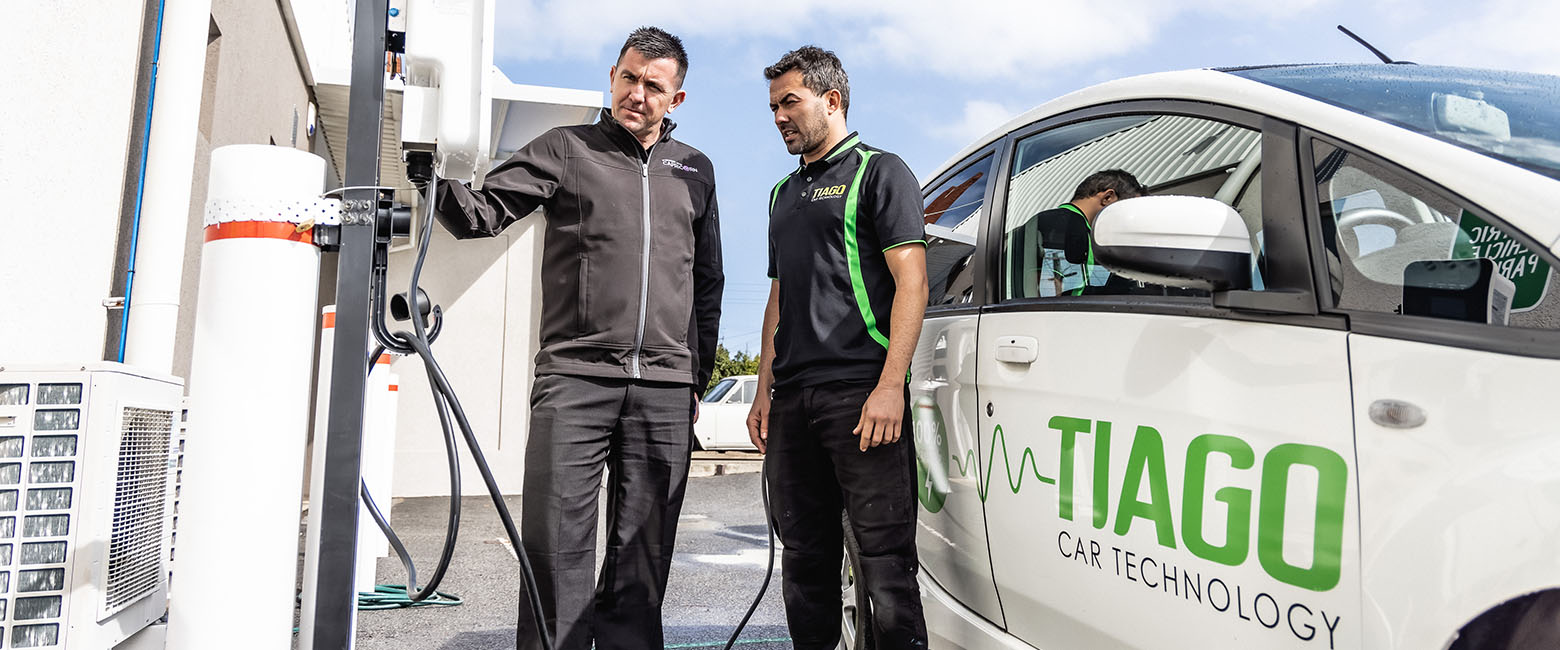However, what does CASE stand for? And how will CASE vehicles impact your business in the future?
CASE stands for connected, autonomous, shared, and electric vehicles — the four major areas of technological development for the next generation of cars, each dedicated to a different area of vehicle technology.
C - Connected
Connected technology allows vehicles to connect to the internet. A further expansion of the Internet of Things, connected technology will allow vehicles to capture and share telematics, perform remote diagnostics, and conduct proactive maintenance (think of a process similar to updating your smartphone).
PwC1 projects connected technology to be available on all new vehicles by 2030, making up 55% of the total US car parc.
How will connected technologies affect your business? Connected technologies will reduce the need for software updates at services and will likely reduce the requirement for minor programming maintenance. However, connected technologies may help reduce the time it can take to diagnose faults (improving workshop efficiency) and improve access to remote specialist support.
A – Autonomous
Autonomous vehicles are one of the most talked about advancements on this list. From sci-fi movies to Tesla keynotes, autonomous, or self-driving, vehicles will be one of the biggest advancements in mobility technology since the invention of the automobile.
There are five levels of vehicle autonomy as outlined by SAE, ranging from the driver performing all of the tasks needed to control the vehicle, right through to fully autonomous vehicles.
Autonomous vehicles face a lot of hurdles, which have continued to cause significant delays. From technological hurdles, ethical discussions, regulatory standards, and infrastructure barriers, there is a lot to overcome in our journey to a world which looks like the ‘Minority Report’.
In the meantime, vehicles with L1 to L3 systems are going to thrive, making up 70% of total new car sales in the US by 2030. By this time L1 to L3 vehicles will also make up 42% of the total US car parc, and it is likely we will see the same trend in Australia and New Zealand.
L4 and L5 vehicles are not expected to arrive until well after 2030.
How will autonomous vehicles affect your business? Those of us working with ADAS are going to see the greatest impact of vehicle autonomy in the short term. With true autonomy still a way off, it will most likely be L1 through to L3 systems arriving in businesses over the coming years.
With numerous safety features reducing the number and severity of collisions, there will be fewer repairs required. However, the time required to repair and recalibrate vehicles after an accident will increase. McKinsey & Co2 project a decrease in the profit opportunities of parts in the coming years, but an increase in the profit opportunities for labour.
S – Shared
From Uber’s ride-sharing model to subscription models like Zipcar, we are already seeing the exploration of shared ownership models become reality. With more than one regular driver, shared ownership models give people the flexibility of private, on-demand transport without the cost and maintenance of private ownership.
The arrival of connected vehicles in coming years will greatly affect the scope and scale of shared vehicles. And combined with the arrival of vehicle autonomy, shared vehicles make the future of public transportation look very different.
Once vehicle autonomy allows shared vehicle models to reach total cost parity, expect shared vehicles to explode.
How will shared ownership affect your business? Shared mobility will mean a reduction in the number of private owners looking to service their cars. Instead, servicing will become part of fleet management for the different service providers.
According to McKinsey & Co, cars used in the shared ownership model are going to see higher mileage with greater wear on tyres and brake pads.
E – Electric
Like vehicle autonomy, the rise of electric vehicles (EVs) is incredibly well-documented. With OEMs planning to launch over 70 EV models over the next 7 years, EVs will continue to be a leading topic of industry discussion.
By 2030, PwC expects 13%–20% of all US new car sales to be EV. And whilst EVs won’t have a huge impact on the US car parc, like in the US we can expect to start seeing a greater number of them on the road in Australia and New Zealand, and a shift to BEVs and PHEVs.
The rise of electric vehicles is influenced by a few factors. The greatest growth in EV sales is expected once total cost parity is achieved. At current projections this is expected around 2027, although it could be met earlier if the OEMs meet their battery cost targets.
Charging infrastructure is also going to be a large part of the rise of electric vehicles. Right now, it is still cheapest to charge an EV at home. However, between now and 2030, external charging will continue to fall in cost, and charging times are set to improve.
How will EVs affect your business? As we all know, EVs need a completely different approach to servicing, from equipment to training requirements. Whilst the car parc penetration expectations are low, in the coming years we expect to see a greater number of EVs arriving in Member businesses.
1From the PwC ‘The Impact of Electrification & Automated Technology on the Automotive Aftermarket’ presentation at the 2021 AASA Vision Conference.
2 From the 2021 McKinsey & Co Making Every Part Count report.


